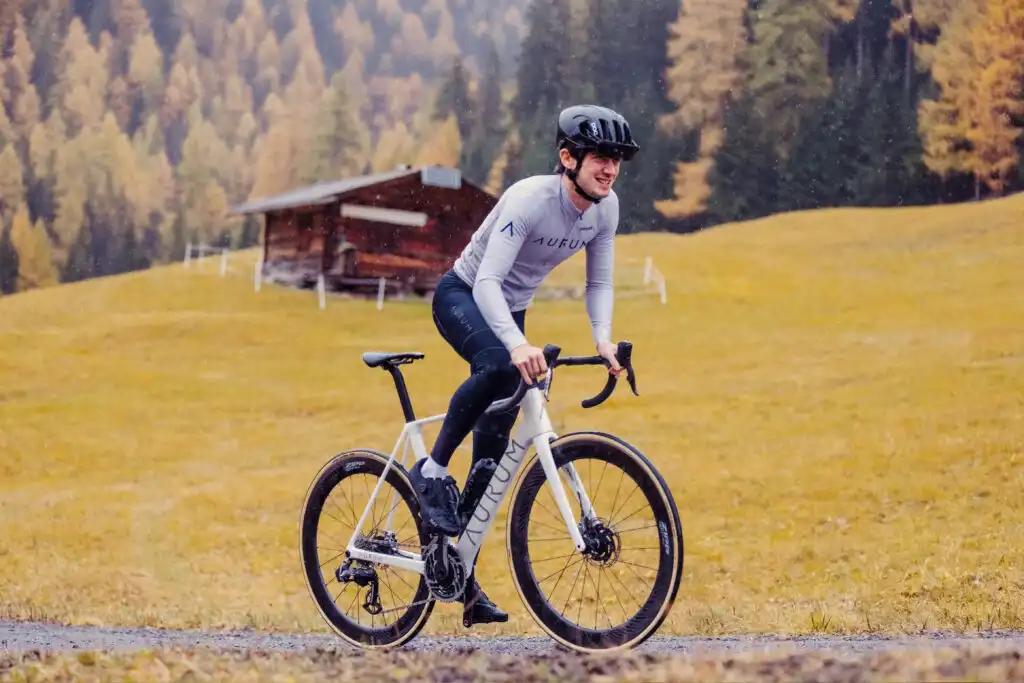Whether you’re cycling for fitness, commuting, or just enjoying a leisurely ride, the right clothing can make all the difference in your comfort and performance. While it’s tempting to simply hop on your bike in any old clothes, cycling-specific gear is designed to improve both your experience and your efficiency on the road or trail. In this blog, we’ll walk you through the essentials of cycling apparel and explain how to choose the right gear for comfort, performance, and safety.
1. Cycling Jerseys: The Key to Comfort
A cycling jersey is more than just a stylish piece of clothing. It’s a crucial part of your kit that can significantly improve your comfort during long rides.
-
Breathability: Cycling jerseys are made from materials like polyester and lycra, which are breathable and moisture-wicking. This means they pull sweat away from your skin and help you stay dry and comfortable. On long rides, staying dry is key to preventing chafing and overheating.
-
Fit: Cycling jerseys are designed to fit snugly against your body. A tight-fitting jersey reduces wind resistance, making you more aerodynamic. The snug fit also prevents the fabric from flapping in the wind, which can be distracting and uncomfortable.
-
Pockets: One of the standout features of cycling jerseys is the rear pockets. These pockets allow you to carry essentials like snacks, a phone, or a small repair kit without the need for a backpack.
-
UV Protection: Many cycling jerseys are made with fabrics that provide sun protection, which is especially important if you spend a lot of time riding outdoors.
For both comfort and performance, invest in a high-quality jersey that fits well and is made from moisture-wicking, breathable fabric.
2. Cycling Shorts: Comfort Starts with Your Bottom Half
Cycling shorts are another essential piece of apparel, designed to prevent discomfort while you’re on your bike. Here’s why they’re important:
-
Padding: Most cycling shorts come with padding in the seat area, also known as a chamois. The chamois helps to reduce friction, prevent chafing, and provide extra cushioning during long rides. This padding is designed to fit seamlessly into your riding posture, so it won’t cause discomfort.
-
Fit: Cycling shorts are made to fit snugly, which helps with aerodynamics and reduces fabric bunching. They’re also designed to stay in place, so you won’t have to constantly adjust them while riding.
-
Compression: Some cycling shorts are made with compression fabrics that help increase blood flow and reduce muscle fatigue. This can be especially helpful during long-distance rides or when tackling hilly terrain.
Invest in a pair of high-quality cycling shorts that have good padding and are made from stretchy, moisture-wicking fabrics. There are also various types of shorts, including bib shorts (which have straps that go over your shoulders) and waist shorts, so you can choose the style that best suits your preference.
3. Cycling Shoes: Performance and Efficiency
Cycling shoes are a key piece of equipment for maximizing performance, as they help you pedal more efficiently.
-
Stiff Sole: Unlike regular sneakers, cycling shoes have a stiff sole that helps transfer more power from your legs to the pedals. This allows you to pedal more efficiently, especially on long rides or during intense cycling sessions.
-
Cleats: Most cycling shoes are designed to be used with clipless pedal systems. These systems allow you to clip your shoes directly into the pedals, creating a stronger connection and allowing you to push and pull during each pedal stroke, which improves efficiency.
-
Comfort and Fit: Look for shoes that fit snugly but comfortably. They should offer good arch support and allow enough room for your toes to move without being cramped. It’s also essential to choose shoes with a secure closure system, such as Velcro straps or a ratchet buckle, so they stay in place during your ride.
If you’re new to cycling, clipless pedals and shoes might seem intimidating, but they’re a great investment if you plan to cycle regularly. If you’re just starting out, you can use regular flat pedals until you get used to the sport.
4. Gloves: Protection and Comfort for Your Hands
Your hands endure a lot of pressure while cycling, especially during long rides or rough terrain. Cycling gloves provide several benefits:
-
Cushioning: Gloves with padding in the palms help absorb vibrations from the handlebars, reducing hand fatigue and improving comfort.
-
Grip: Gloves also enhance your grip on the handlebars, which is important for control and safety, especially on rough trails or during wet conditions.
-
Weather Protection: In colder weather, full-finger gloves will help keep your hands warm. For warmer rides, half-finger gloves allow better airflow while still providing protection.
Cycling gloves are lightweight, breathable, and designed to prevent blisters. Make sure they fit snugly but are not too tight, and choose gloves that suit the weather conditions you’ll be riding in.
5. Jackets and Windbreakers: Protection from the Elements
Weather conditions can change rapidly, and being prepared for the unexpected is essential for any cyclist. A lightweight, breathable cycling jacket or windbreaker can provide protection against wind, rain, and cold temperatures.
-
Breathable and Packable: Look for jackets made from lightweight, breathable fabrics that can wick moisture away from your skin. Many jackets can be easily packed into a small bag when not in use, making them convenient for unpredictable weather.
-
Water-Resistant: If you’re riding in areas where rain is common, opt for a water-resistant jacket that will keep you dry without feeling too heavy.
-
Visibility: Some cycling jackets come with reflective elements that help increase your visibility when riding in low-light conditions, which is essential for safety.
Having the right jacket on hand ensures you stay comfortable and protected, no matter what the weather brings.
6. Helmets: Safety First
While helmets aren’t necessarily about comfort and performance, they’re a must-have for any cyclist. A well-fitting helmet provides essential protection for your head in the event of an accident.
-
Fit: A good helmet should fit snugly on your head without being too tight. It should cover your forehead without obstructing your vision and should remain secure while riding.
-
Ventilation: Look for a helmet with proper ventilation to keep your head cool and comfortable during long rides.
-
Safety Standards: Make sure your helmet meets safety standards such as those set by the Consumer Product Safety Commission (CPSC) or other recognized authorities.
Don’t skimp on a helmet—it’s a small investment that can save your life in the event of an accident.
7. Sunglasses: Protection for Your Eyes
Cycling sunglasses not only protect your eyes from the sun but also shield them from wind, dust, and debris while riding.
-
UV Protection: Look for sunglasses that provide 100% UV protection to reduce eye strain and prevent long-term damage from the sun’s rays.
-
Impact Resistance: Cycling sunglasses are made with impact-resistant lenses to protect your eyes from flying debris or insects.
-
Comfort and Fit: Ensure your sunglasses fit comfortably and stay in place while riding. Look for lightweight frames and adjustable nose pads for a secure fit.
Conclusion
Choosing the right clothing and gear is essential for both comfort and performance when cycling. From moisture-wicking jerseys to padded shorts, cycling-specific apparel is designed to enhance your riding experience and help you perform at your best. Don’t forget to invest in safety gear like helmets and gloves, as well as the right accessories to keep you comfortable on longer rides.
With the right gear, you’ll not only ride more efficiently, but you’ll also enjoy your time on the bike, no matter how far you go. So gear up, stay safe, and ride with confidence!

